Consent Fatigue: Why Too Many Pop-Ups Hurt Your Privacy Trust
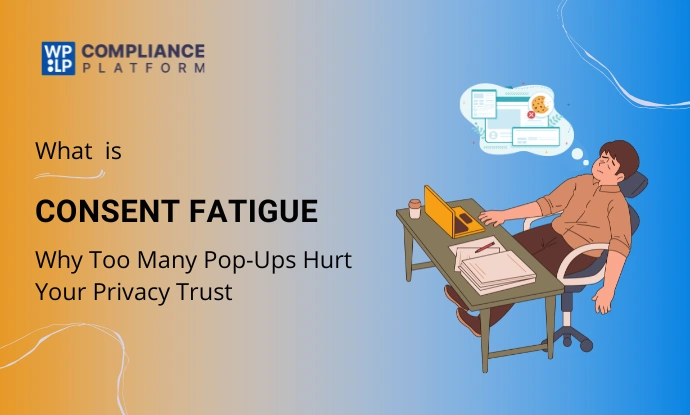
Summary
The article discusses some common causes of consent fatigue, as well as the best practices to improve privacy trust. It also gives real-world case studies to understand consent fatigue better.
Finally, the article illustrates how the WPLP Compliance Platform helps businesses reduce consent fatigue by offering customizable, user-friendly banners, consent logs, and guided tools for legal compliance.
Are you tired of being hit with a pop-up after a pop-up, just to browse a website?
You’re probably suffering from consent fatigue! Consent fatigue occurs when you become overwhelmed or annoyed by frequent consent pop-ups on websites or apps, and clicking the “I Agree” button to make the banner disappear.
This situation is not just annoying; it also creates serious challenges that sabotage the principles set by privacy laws.
If you’re a website owner or a marketer, that’s not really a positive result. This leads users to often agree without fully understanding what they have given their consent to, and it is, in turn, a violation of regulations such as GDPR and CCPA.
This article examines how cookie pop-up trust is being compromised and discusses ways to improve the privacy user experience to address the issue.
So come on to explore what consent fatigue is and how to tackle it!
- How Consent Fatigue Harms Privacy Trust & Compliance
- Common Causes of Consent Fatigue on Websites
- Practical Solutions to Reduce Consent Fatigue
- Best Practices for Ethical and Effective Cookie Banner UX
- Role of WPLP Compliance Platform in Mitigating Consent Fatigue
- Case Studies of Good vs. Bad Consent Experiences
- FAQ
- Conclusion
How Consent Fatigue Harms Privacy Trust & Compliance
When users are bombarded with multiple consent banners repeatedly, their behaviour changes from informed decision-making to pure reflex. Like when you get tired of pop-ups, you just click “Accept All” without even reading what you’re consenting to. That means you didn’t really agree to anything and just wanted the pop-up to go away.
Users do not need to see multiple banners continuously asking for consent while they are just trying to access your content.
This blind acceptance is problematic because it undermines the focus on informed consent required by regulations. If a user is not given free choice to choose their consent preferences, it could be considered invalid and put the business under heavy fines and legal risk.
This is not just an annoyance but a major concern, as it could be classified as a dark pattern, as it cannot be considered real consent, and it breaks trust.
Common Causes of Consent Fatigue on Websites
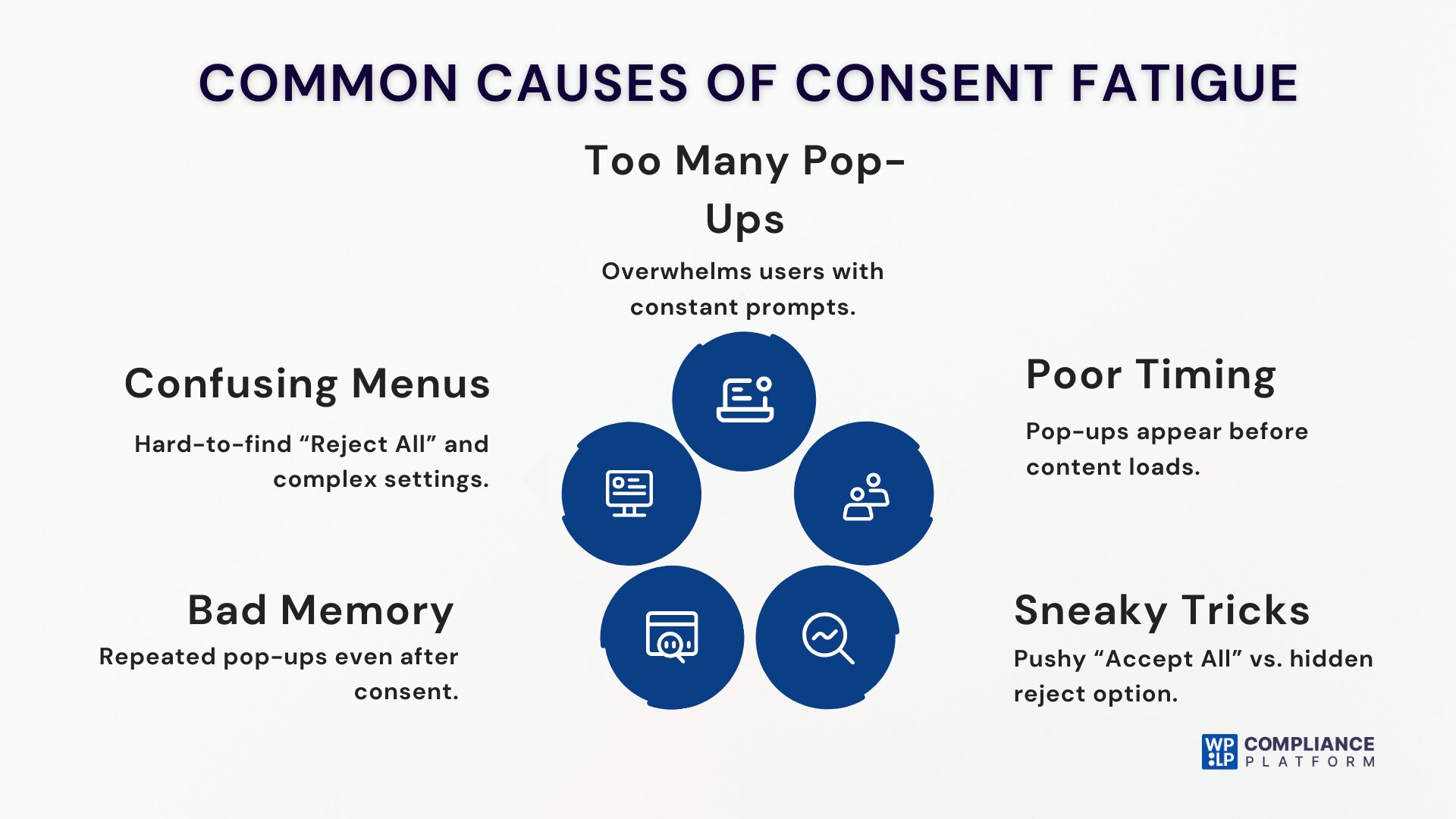
So, why are so many websites causing consent fatigue to their users? The problem often arises from several mistakes. They are:
- Too many pop-ups: Adding multiple pop-ups for everything on your site, such as “Accept cookies,” “Sign up for our newsletter,” “Take our survey!” is an annoying pattern. This results in users giving their consent for the sake of getting rid of those pop-ups.
- Confusing menus: The design of many banners makes it difficult to find a clear “Reject All” button, and get a complicated menu while wanting to manage preferences. Users are often made to navigate a maze of toggles and checkboxes, which is so complicated.
- They forget who you are: Getting the same pop-up and again after coming back to the site is super annoying. It’s like the website has a really bad memory.
- Poorly timed interactions: Pop-ups that appear immediately upon loading, before a user can even see the content, are particularly jarring and frustrating.
- Sneaky tricks: When banners make ‘Accept All’ bold and colorful while hiding ‘Reject All. This forces users toward a specific, pre-set action, which violates the principle of freely given consent.
Practical Solutions to Reduce Consent Fatigue

You need to correct these mistakes to stay compliant with the data privacy laws and improve how websites request permission more smartly. Focus on these solutions:
- Implement smart frequency capping: Remember and respect a user’s choice. Use cookies or local storage to ensure the banner doesn’t reappear on every visit.
- Employ geo-targeted consent triggers: The full consent banner may not be necessary for all users. Display it only to those in regions with strict privacy laws, like GDPR and CCPA, and simplify the experience for everyone else.
- Design clear and easy opt-out options: The “Reject All” or “Decline” button should be just as visible and easy to click as the “Accept All” button. This is not only an ethical decision but also a legal requirement in many areas.
- Offer a centralized privacy dashboard: Provide your website users with one, easily accessible area to manage all their consents. This simplifies the whole process and empowers them to take control.
Using these methods, you can easily ensure that your website users are consenting to your banners by understanding the content and not just for the sake of it.
Best Practices for Ethical and Effective Cookie Banner UX
An ethical and effective cookie banner design means balancing between legal compliance and creating a positive user experience for your website users. It is important to do so as it increases trust and data transparency.
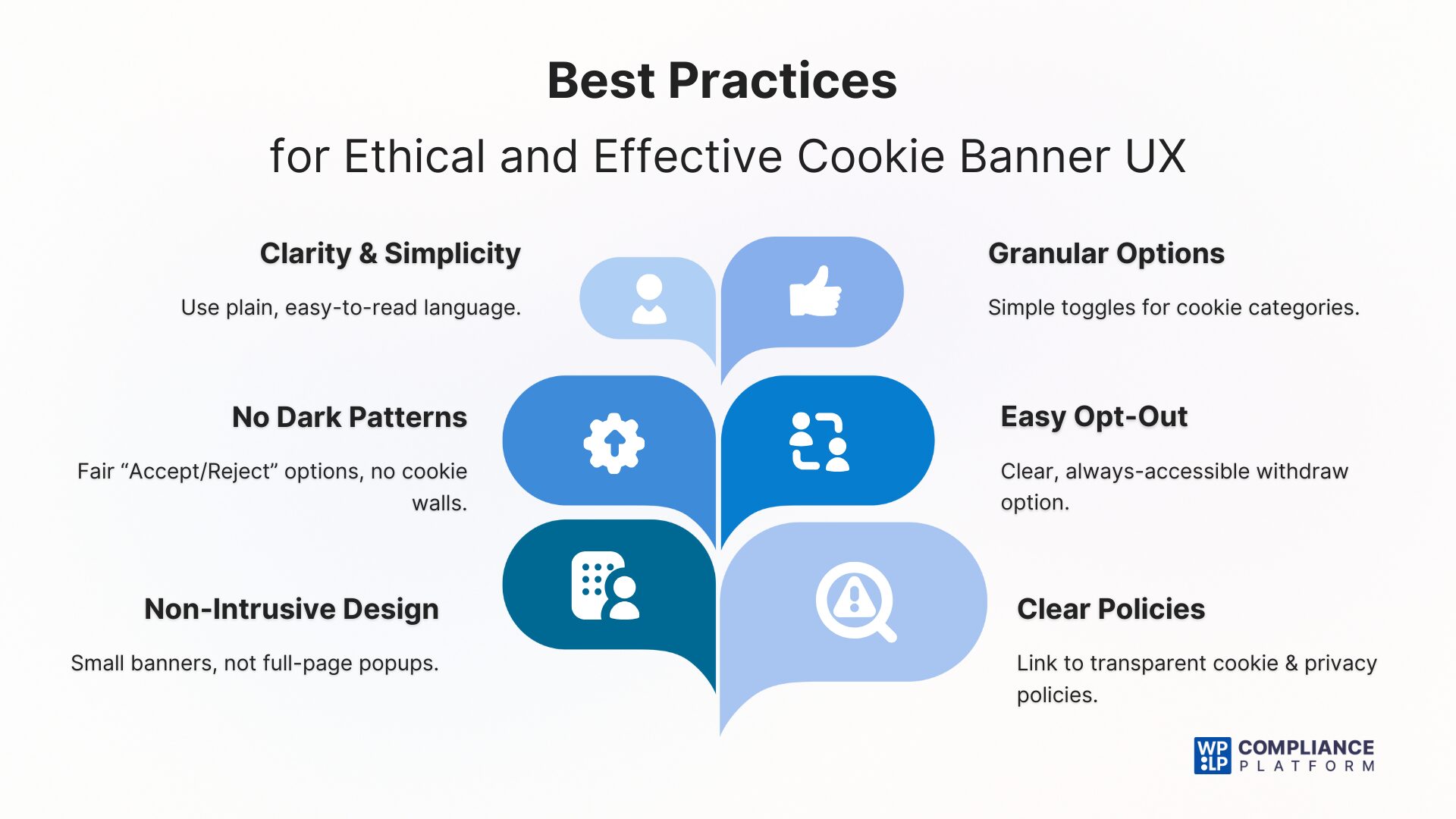
The best practices revolve around:
Clarity and Simplicity
You must use clear and straightforward language that everybody can understand. Avoid using heavy legal terms or complex jargon. The message should briefly and clearly explain why you use cookies and how they improve the user’s experience. This builds trust by showing that you have nothing to hide.
No Dark Patterns
Dark patterns are sneaky design tactics that manipulate users into giving consent. For instance, the “Accept All” button should not be bold and have fancy coloured buttons, while the “Reject All” button is a tiny link, nowhere to be found. Non-essential cookies, like those for marketing or analytics, should be unchecked by default. Additionally, no cookie walls should be used that block a user from accessing content unless they accept all cookies.
Non-Intrusive Design
The pop-up or banner should not obstruct your website’s contents. It should be a small banner at the corner or any side of your page. This is less disruptive than using a full-page pop-up.
Granular Consent Options
You should enable users to manage their consent preferences with easy-to-use toggles for different cookie categories, such as necessary, analytics, marketing, etc. Users get real control over their data through this practice and build trust and reputation.
Easy Opt-Out
Being able to withdraw given consent should be as easy as giving it. You should provide a clear, persistent link or icon on your website, in an easily accessible location that allows users to reconsider and change their cookie preferences at any time in the future.
Clear Policies
Your cookie banner should have a clear link to your detailed cookie policy and privacy policy. These documents should be extensive but also pretty easy to understand for everyone.
If you keep these best practice techniques in mind, you could very easily avoid consent fatigue for your website’s users.
Role of WPLP Compliance Platform in Mitigating Consent Fatigue
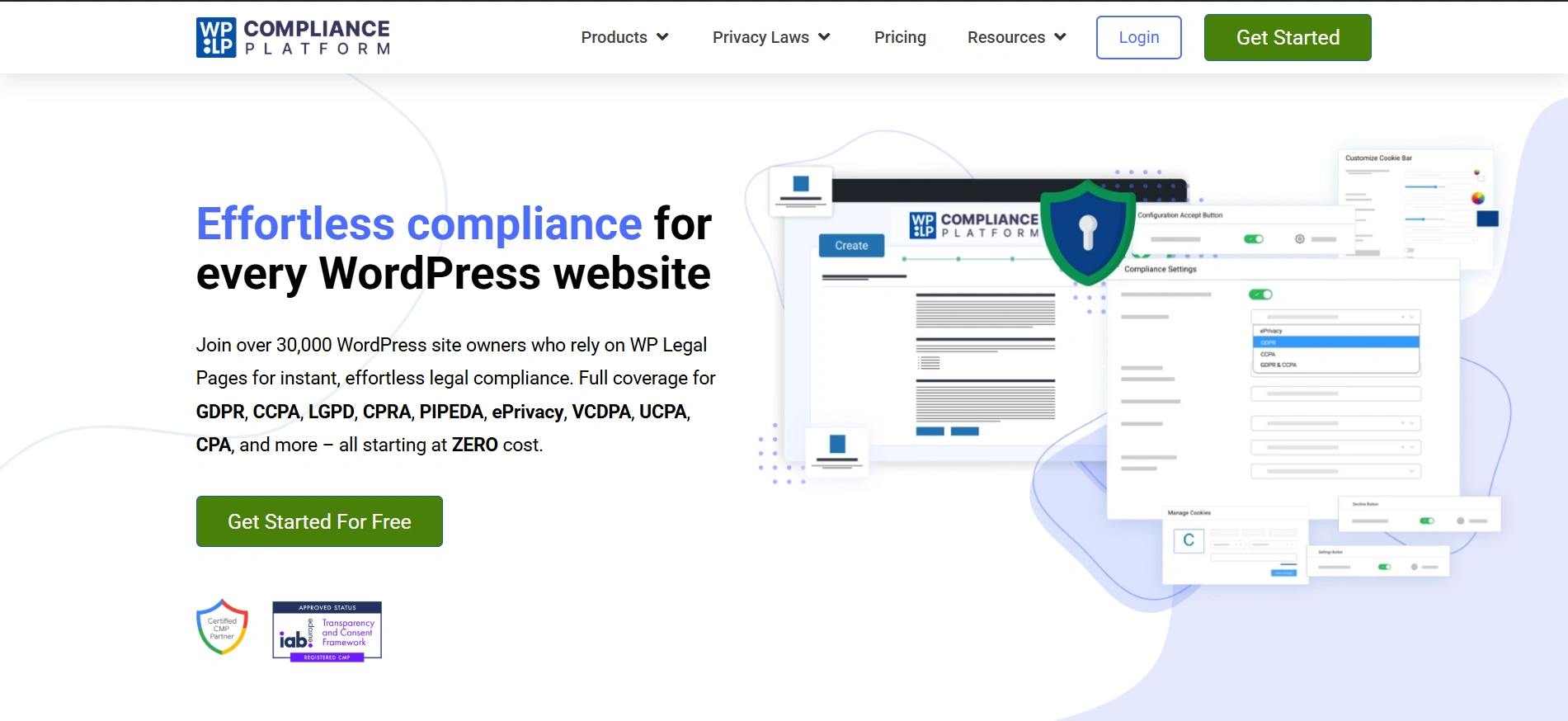
This is exactly where the WPLP Compliance Platform can be perfect for your website. It is specially designed to enable you to balance compliance with an amazing user experience.
The WPLP Compliance Platform enables you to create compelling cookie banners as well as highly compliant legal pages. They comply with multiple laws such as GDPR, CCPA, LGPD, COPPA, and many more.
This plugin helps manage user consent through customizable cookie banners and makes it easy to maintain legal compliance while offering users control over their data.
Additionally, the plugin offers a user-friendly interface for effortless setup and customization of your cookie consent banner. You can become compliant within a few minutes, without even needing a lawyer.
Features of the WPLP Compliance Platform
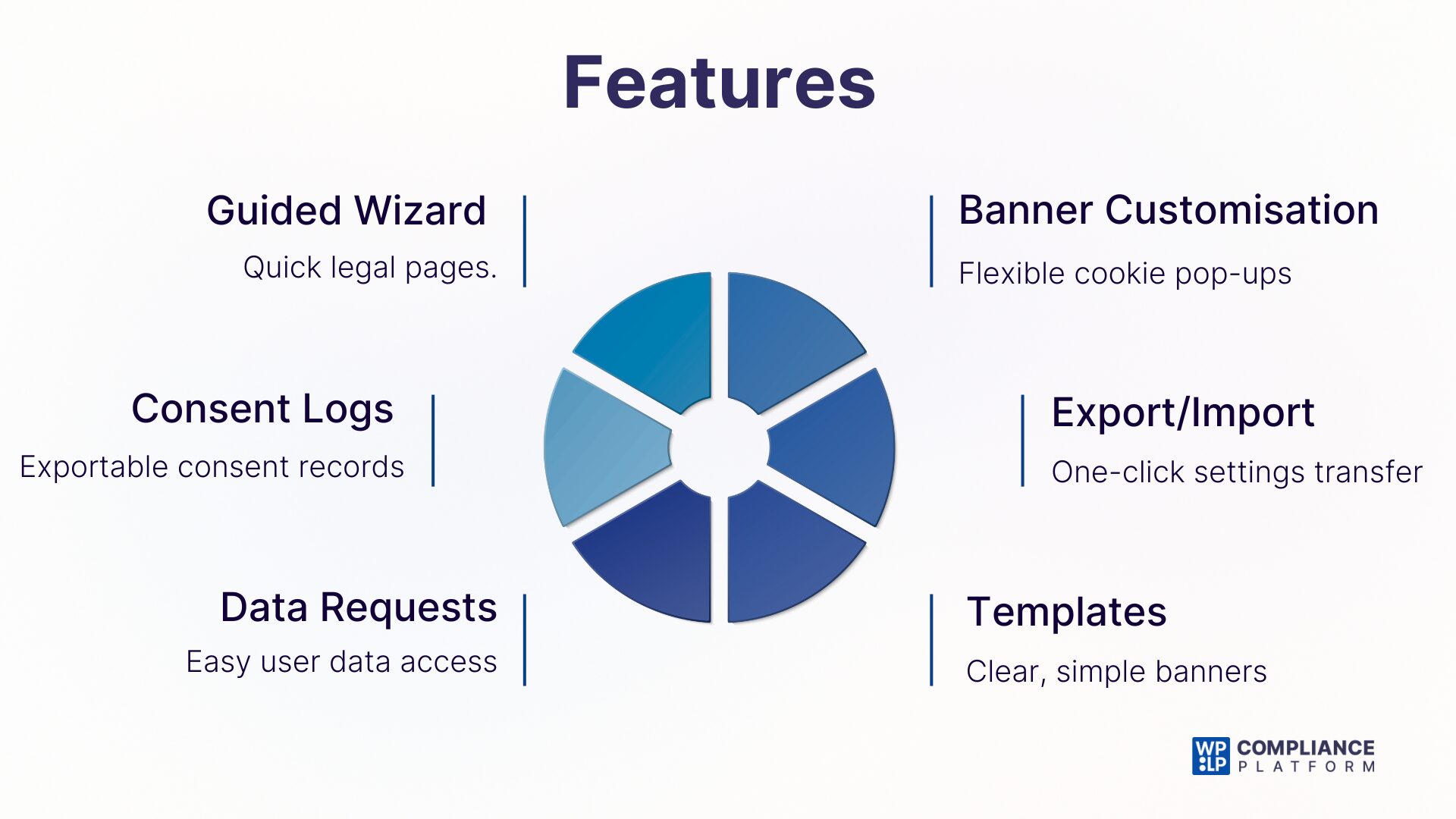
- Guided Wizard: The WPLP Compliance Platform features a wizard to guide you through the entire process of creating legal pages, and you’re good to go.
- Consent Logs: The WPLP Compliance Platform enables you to log consent given by users systematically. This will be your proof in case regulators come knocking at your door. Maintaining consent logs is extremely vital for your website if you want to stay compliant.
- Data Request Forms: The WPLP Compliance Platform enables you to add data request forms to your website through which users can request to know how their data is used.
- Cookie Banner Customisation: You get the option of choosing whether your cookie consent is shown as a banner or as a pop-up, and also adjust its position.
- Export/Import Cookie Settings: You have the option of swiftly exporting cookie settings to other sites. This saves a lot of time and makes compliance easy.
- Customizable & User-Friendly Banner Templates: Using the WPLP Compliance Platform, you can create legal pages and cookie banners with a clean and intuitive design with clear “Accept” and “Reject” options.
The WPLP Compliance Platform makes implementation simple and minimizes the effort required to attain a better balance between compliance and user satisfaction.
Case Studies of Good vs. Bad Consent Experiences
To understand these concepts better, let us now look at some examples of good and bad consent experiences.
The Bad Consent Experience:
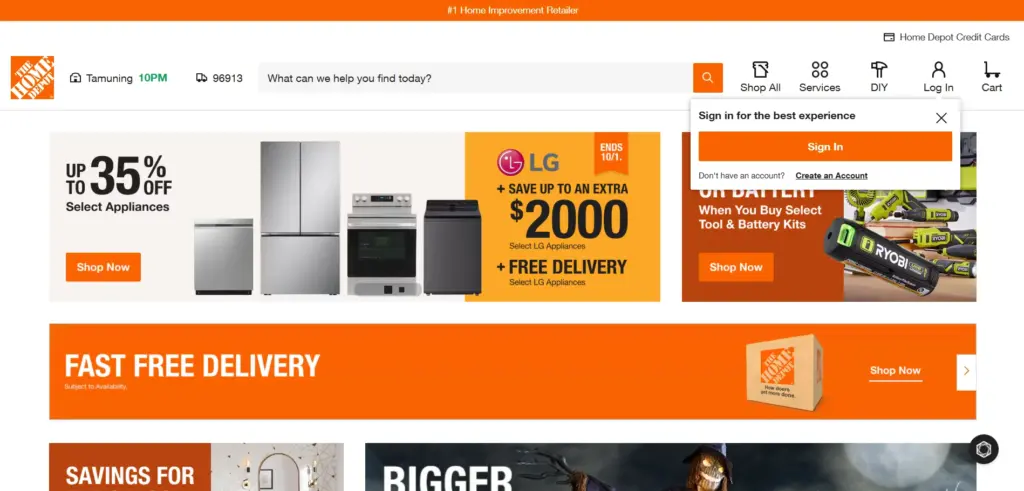
This example is of a well-known and well-respected organisation, Home Depot. It served as a notable example of poor consent practices.
Home Depot shared its customers’ email addresses and purchase data with Meta (Facebook/Instagram) without taking explicit, visible consent.
As a result, Home Depot argued that shoppers were too tired of interacting with constant consent prompts, stating that it was a case of consent fatigue, so shoppers didn’t actively opt in.
This was problematic as users at checkout had no meaningful chance to give informed consent, and privacy terms were nowhere to be found.
To this, Canada’s Office of the Privacy Commissioner (OPC) ruled that real opt-in requires clarity and easy visibility. Hence, Home Depot’s approach failed to meet these standards.
The Good Consent Experience:
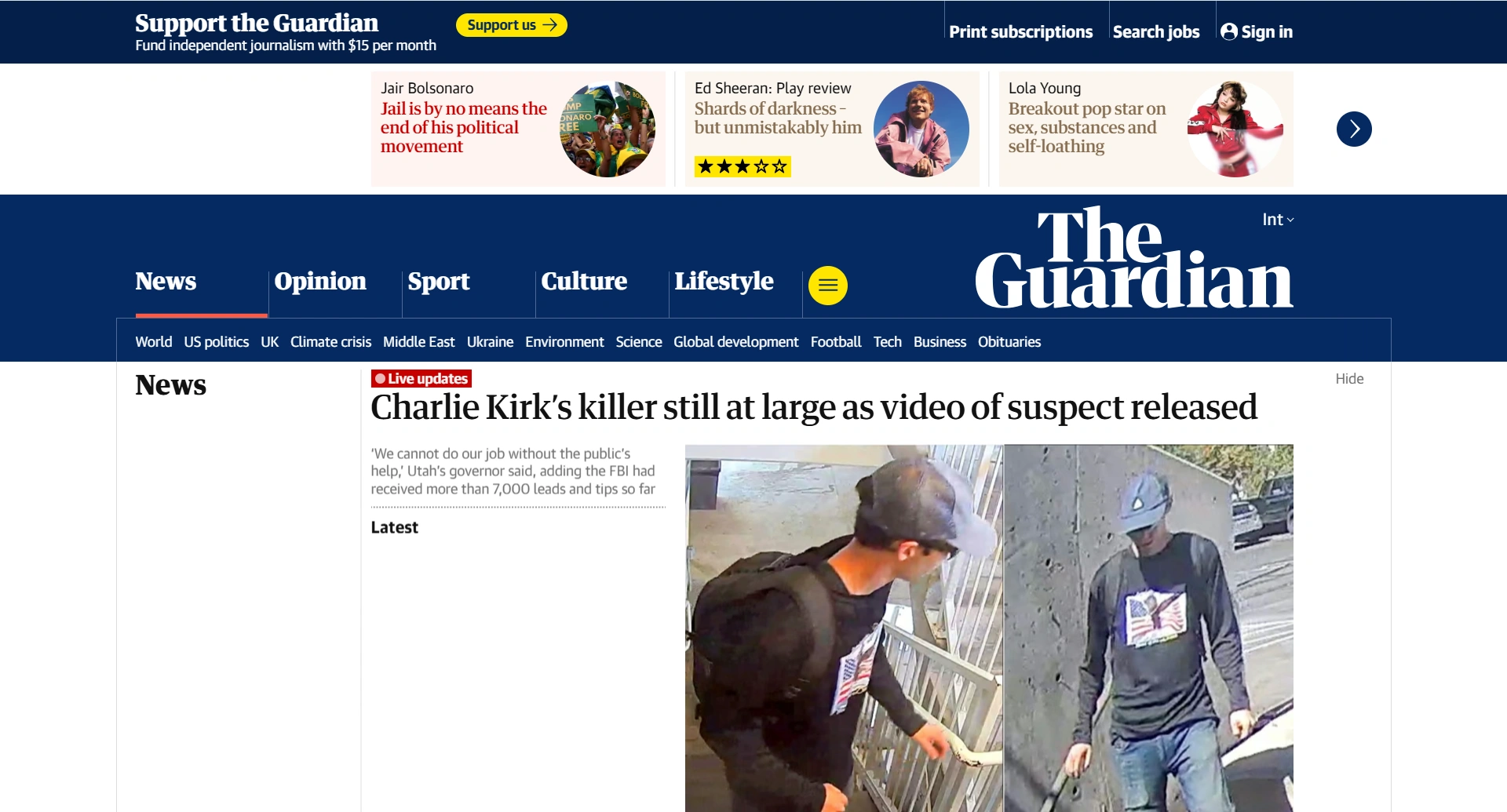
In contrast to the bad experience faced by Home Depot customers, UX professionals have praised The Guardian’s cookie consent interface for its simplicity and fairness.
It offers two equally weighted buttons to accept and reject cookies, as well as a button to manage preferences. You don’t have to deep dive into confusing settings to find the reject button.
As a result, there are no dark patterns, no pushy opt-ins, no constant pop-ups, and a clear path to customise preferences if needed in the future. This company has transformed consent from an annoying obstacle to a smoother interaction.
FAQ
Consent fatigue is when users get tired of constant pop-ups and blindly accept them. To identify this, review your analytics for a high ‘Accept All’ rate combined with high bounce rates.
The global data privacy laws state that consent must be freely given. If a user feels pressured to click “Accept All” just to access your content, that consent may not be considered valid under GDPR, leaving your business at legal risk. You must take care of this, as you might face penalties or legal actions against you.
By using frequency capping, you can prevent the banner from reappearing on every visit and geo-targeting to show it only to users in the required regions. We recommend using the WPLP Compliance platform to simplify the process.
Absolutely! When users feel respected and in control, they are more likely to trust your business, engage with your content, and ultimately become customers. If you want a better consent UX, then try WPLP Compliance Platform to generate legal pages and cookie banners in minutes and without even needing a lawyer.
WPLP is focused on balancing compliance with UX. It uses features like a user-friendly privacy dashboard and easy opt-outs to make the process easy for both the user and the website owner. It also features a guided wizard to help you create legal pages and cookie consent banners with ultimate ease and guidance.
Conclusion
Now we know that the increase in consent fatigue clearly shows that the old methods of managing digital privacy are no longer working.
For website owners, marketers, and compliance professionals, this presents a chance to shift your focus from a legal-focused strategy to a more user-centric approach.
Reducing consent fatigue isn’t just about compliance, it’s about creating a smoother, more respectful user journey. With tools like the WPLP Compliance Platform, you can align with global privacy laws while building long-term trust.
Disclaimer: This article is for informational purposes only and does not constitute legal advice.
Liked reading this article? Here are a few other articles that you can try:
- Consent Audit and Logging: Best Practices & Tools for Compliance
- Avoid Dark Patterns Cookie Banners: Honest and Ethical Design for Compliance
- Canada’s Consumer Privacy Protection Act – An Ultimate Guide
Ready to get started? Try WPLP Compliance Platform today and see how easy compliance can be. If you have questions, our support team is here to help you every step of the way.
